Eastern Slavs - the beginning of history
This work tells about the earliest period stories Eastern Slavs VIII-IX centuries. This is not a retelling of successive historical events, but the first work of a cycle dedicated to the phased development of Russia - Russia, based on current scientific research on this topic.
The initial period of Russian history, according to the conclusions of the outstanding Russian philologist A. A. Shakhmatov (1864–1920), was described in an undated part of the chronicle. The first information was introduced on the basis of oral traditions, hence there are many inconsistencies in dates and events. The early history of the Eastern Slavs is substantially supplemented by archaeological data. Researchers look differently at the archaeological cultures that preceded the archaeological culture of the Eastern Slavs. Some insist on the continuity of these cultures, others believe that there is no continuity, and cultures belong to different ethnic groups.
East Slavs. Resettlement and colonization of Eastern Europe
The ancestors of the Eastern Slavs lived in the middle Dnieper region, the Carpathian region. From here, as well as from Powisle, the Slavs began to advance to the north, east and north-east.
The early events described in the chronicle find the Slavs (especially in some areas) at the very beginning of colonization. The advancement of the Slavs took place along the rivers. Places for settlements were usually chosen on the cape, since the cape is surrounded by water on both sides and it is easier to fortify and defend it.
The main goal was to create a protected tribal center - a "city" in a hostile environment, and not to dominate the river trade arteries, which was not at that time in Eastern Europe.
It is believed that at the time of the settlement of the Slavs across the East European Plain, the climate was milder than now.
The Slavic advance through these territories was not peaceful, as evidenced by both archaeological monuments and a summary of the chronicles. The struggle was not only with the Finno-Ugrians and the Balts, but also among themselves. The Volhynian tribe at one time dominated in the western and central parts of Ukraine, the Drevlyans "tortured" the glades. Many researchers suggest that the settlement of the Slavs took place in places that were not very attractive for the Balts and Finno-Ugrians due to various types of farming. The Finno-Ugric tribes carried out an appropriating type of activity: hunting, gathering and slash farming, and the main type of economy of the Slavs was plow agriculture. The higher type of management provided them with an economic advantage. Nevertheless, the still outstanding Soviet archaeologist M.I. Artamonov (1898-1972) wrote:
The rarity of the Finno-Ugric and Baltic population in these territories did not change anything. Tribal boundaries, "hunting territories" were inviolable for all peoples at the stages of development under consideration. The collisions could not lead to any assimilation. Which, in fact, did not happen. Clashes led to the destruction of a hostile tribe or its expulsion.
As evidenced by the ethnographic material. The early Slavic cities, many researchers consider, by analogy with the medieval European settlement of the period of the struggle of cities with the feudal lords in the XIII-XV centuries, trade or interethnic centers, often of almost all galactic significance.
But they were exclusively fortified tribal centers of the Slavs who colonized in a hostile environment. These were Smolensk (Gnezdovo), Ladoga, Pskov, Novgorod. Archaeologists have discovered many of these "cities" during the migration period. For example, Gorodok na Lovati, Ryurikovo settlement and Kholopiy hillock in northern Priilmenye, Kobylya Golova settlement, Malyshevo, Malye Polischi in eastern Priilmenye, etc. The city of Murom and Vladimir on the Klyazma was founded in a purely Finnish environment. A huge number of such towns (as a type of settlement) existed in Russia until the XNUMXth century, when, with the division of labor, the division into town and village began, in the literal sense.
Colonization intensified with the emergence of the early Russian potestary "state".
The Finno-Ugric population "disappears", their tribal and sacral centers are desolate. As for assimilation, with regard to Northeastern Russia or the modern northern and northeastern regions of the central district of the Russian Federation, a serious percentage of the presence of the Finno-Ugric component among the Slavs is found only on the periphery, it did not affect (or did not affect very little) the center of the future Great Russian state: Rostov-Suzdal land with cities.
"The Legend of the Varangian Calling" tells about the strife between the Finno-Ugric tribes of the north-west of Eastern Europe and the Slavic newcomers: between the Chud and the Merey (Finno-Ugric tribal unions), the Krivichs and Slovenes (Slavic tribal unions).
Let's look at the picture of the settlement of the Eastern Slavs before the unification of these lands.
Buzhany, Volynians, Duleby, Polyana, Drevlyane, Dregovichi, White Croats inhabited and mastered the territories of the central and western part of Ukraine and western and central Belarus.
The Radimichs came from the territory of the future Poland ("lyashkoy" tribe) and settled on the Sozh River, on the territory of the modern Mogilev and Gomel regions.
The tribal union of the Krivichi, which had close ties with the Baltic tribes, occupied the territory of the Pskov region, and then moved south, to the upper reaches of the Dnieper and Volga (modern Minsk and Smolensk regions). It is worth noting that their tribal union included tribes not mentioned in the annals, for example, the Smolyans.
The northerners lived on the left bank of the Dnieper, their capital - the future city of Chernigov.
Vyatichi lived in the basin of the Oka and the Moskva River, on the territory of the modern Moscow, Ryazan, Oryol, Kaluga, Rostov and Lipetsk regions.
The Ilmenian Slovenes occupied the territory of modern Novgorod and part of the Leningrad region. Historians describe their origins in different ways. Some suggest that they migrated from the territory of the Dnieper region, others - that from the Baltic Pomerania (modern Germany and Poland).
Tivertsy and Ulichi settled in the area between the Danube, Prut, Dniester and Dnieper rivers, along the Black Sea coast. This is the modern territory of Moldova (Moldova) and the south-west of Ukraine.
There is an assumption that at the end of the XNUMXth century a new wave of Slavic settlers from the Danube and from Moravia moved to Eastern Europe. They brought new technologies and social skills, for example, the potter's wheel and even the term "knyaz". But there is no explanation as to how they were integrated into the tribal structures of the tribes of Eastern Europe.
Ancestral society of the Eastern Slavs
East Slavic society differed little from the early Slavic VI-VIII centuries. And it was based on the tribal system.
A genus is a collective of relatives, consisting of male relatives. In the tribal collective, of course, an outside participant, not a relative, who performed a certain rite, such as a blood oath, could be introduced.
The right-duty to defend and protect each member of the clan (revenge or compensation) rallied the collective. The collective was obliged to take care and protect each of its members, which was an integral part of the tribal system:
At the head of the collective was the head of the clan, who had sacred and absolute power over the members of the clan. Several clans were united into a tribe. “Each reigned by his own kind,” the chronicler writes, that is, each tribe had self-government. City elders or elders ruled over the tribe. The military leaders of the community were probably next to the elders, although they could also be the leaders of the tribe.
At a minimum, we know the Slavic leaders Kiya, Schek, Khoriv in the glades, among the Drevlyans - Mala, among the Slovenes, possibly Vadim the Brave and Gostomysl. The Vyatichi had their own leaders. The term prince appeared later and began to denote the military leader and the head of "executive power".
The tribe consisted of free "husbands" - warriors who took part in solving the most important issues at the national assembly (veche). Moreover, they stood at different levels of the tribal system:
The glades had the custom of their fathers, meek and quiet ... They also have a marriage custom: the son-in-law does not go after the bride, but they bring her the day before, and the next day they bring for her what they give.
And the Drevlyans lived in a bestial custom, lived in a bestial manner: they killed each other, ate unclean things and they never had any marriages, but they abducted the girls by the water.
And the Radimichi, Vyatichi and Northerners had a common custom, they lived in the forest, like all animals, and they never got married ... "
Archaeologists show that fortified settlements, consisting of 3–4 or 5–15 settlements, were located nearby, at a distance of 1–5 km. They formed a "nest". The nest occupied an area of 30 by 60 or 40 by 70 km. They were separated from neighboring nests by a “neutral” strip of 20–30 km. A settlement-settlement is a clan, and a nest is a tribe.
All the early cities originated from settlements-fortifications. They were originally exclusively tribal in nature and were tribal centers.
The clan was not only the basis of social, but also economic life. The economic base of the society was the collective ownership of the land by the entire community. Archaeological material speaks of a certain social equality of large families. In all activities, it was not economic, but consanguineous relations that were decisive.
On the eve of the super union
Agriculture was the key occupation. And in this, the Slavs were significantly different from other inhabitants of Eastern Europe, which gave them an economic advantage. Although the crafts occupied a huge place in their economic activities.
The separation of the craft did not take place, the artisan did not produce goods for the market, but worked to satisfy, if necessary, the needs within the family and clan.
In scientific historiography, a number of researchers consider trade to be a determining factor in development in Eastern Europe during this period. This is a direct modernization of the historical process, which contradicts the historical situation. Actually, trade "slid" on the surface of a primitive, from the economic point of view, society. Where, in a subsistence economy, we observe an extremely meager material world. Even in war it was used weapon, which was also used in everyday activities: a bow, a spear, possibly an ax. Before the arrival of the Rus, the Eastern Slavs did not have swords, the iconic weapon of the nobility and the supra-tribal military organization (squads).
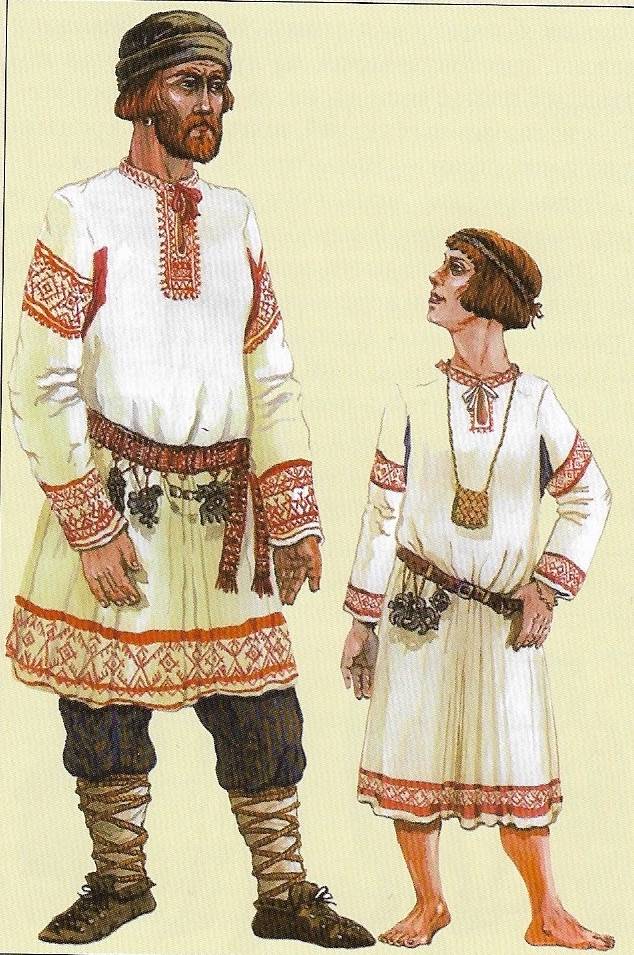
Modern reconstruction of the Eastern Slavs.
The most important factors that influenced development were, firstly, population growth and the need to colonize new lands: agriculture, hunting and gathering in the forest and forest-steppe conditions did not provide a sufficient surplus product for the development of society.
Secondly, external pressure from the Khazars and Varangians. Changes were required to confront the enemies, who were taking away not only a "meager" surplus product, but also a significant portion of the vital. Rod could not cope with such problems. For survival and existence, it was necessary to unite on new foundations. And for the unification, it was necessary to have appropriate management. But the level of day-to-day management could solve short-term issues, for example, the unification of tribes into a temporary alliance to solve current problems (the expulsion of the Varangians in 861), but did not solve long-term problems.
To understand the processes of development in such a society, we quote from the work of the French ethnologist K. Levi-Strauss "Structural Anthropology":
This was the situation among the early Slavs, during the period of migration to the Balkans in the XNUMXth-XNUMXth centuries. We also see it during the migration of the Eastern Slavs in the VIII-X centuries. And it was external factors that had a significant impact on the formation of the first pre-state formations among the Slavs in the early XNUMXth - early XNUMXth centuries.
Most European peoples, for example, the ancient Romans, of the same period, passed through a similar structure of society. Rome in the early "royal period" was a tribal center.
The tribe was divided into three tribes, and the tribe - into ten curiae, the curia - into ten clans, the clan - into ten families.
The patricians, the fathers of the families, were at the head of the clans.
The supreme governing body was the people's assembly, which met in curiae.
The second governing body was the Council of Elders or the Senate. The Senate approved the decisions of the popular assembly and appointed a new king or military leader.
Nearby, and not above the Senate and the National Assembly, stood the rex (king) - this is a tribal military leader and high priest, a leader elected for life.
The land was collectively owned. Each clan had its own common cemeteries and clan cults.
The Eastern Slavs in the north of Eastern Europe were able to create a "super-union" (a stable scientific concept of a potestary, non-state association) with the Finno-Ugric tribes, which solved the tactical task of temporarily expelling the Varangians, but did not provide permanent security and management of these alliances. The tribal structure did not allow to act in a different way: "a clan rose to a clan".
In the absence of common governing bodies, it was decided to establish a supra-tribal structure, inviting it from outside, which entailed overcoming the static system of tribal isolation.
Sources and literature:
Adam Bremen, Helmold from Bosau, Arnold Lubeck "Slavic Chronicles". M., 2011.
PVL. Text preparation, translation, articles and comments by D. S. Likhachev. SPB., 1996.
Artamonov M. I. Slavs and Normans in Eastern Europe during the formation of the Russian state // Bulletin of Leningrad State University No. 4. 1988.
Bulkin V. S., Dubov I. V., Lebedev G. S. Archaeological monuments of Ancient Russia of the IX-XI centuries. L., 1978.
Kolchanov M.V. Property M., 1962.
Lebedev GS The Viking Age in Eastern Europe. SPb., 1995.
Levy-Strauss K. Structural Anthropology. M., 2011.
Ryabinin E.A.Finno-Ugric tribes in the structure of Ancient Russia. SPb., 1997.
Sankina S. L. Ethnic history of the medieval population of the Novgorod land. M., 2012.
Sedov V.V. Slavs. Old Russian people. Selected Works. M., 2005.
Medieval Ladoga. New archaeological discoveries and research. L., 1985.
Froyanov I. Ya.Kievan Rus. L., 1990.
Froyanov I. Ya. Rebellious Novgorod. SPb., 1992.
To be continued ...
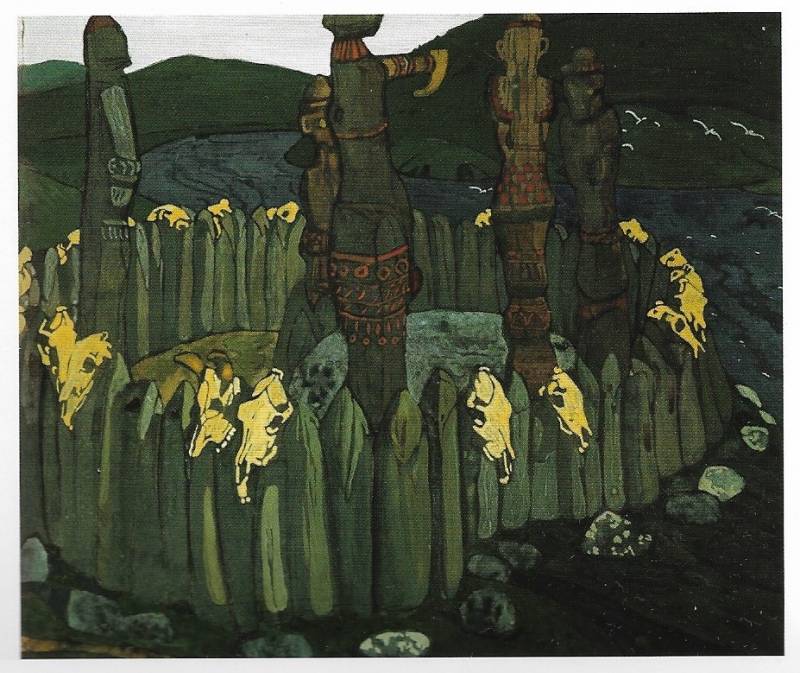
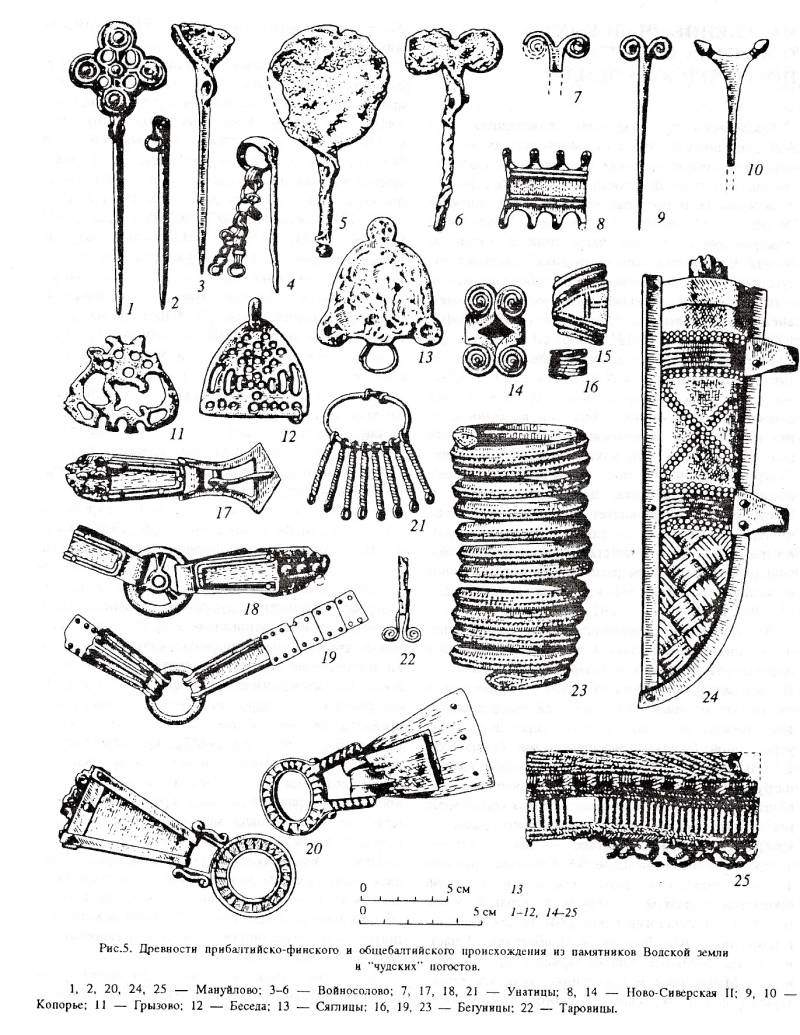
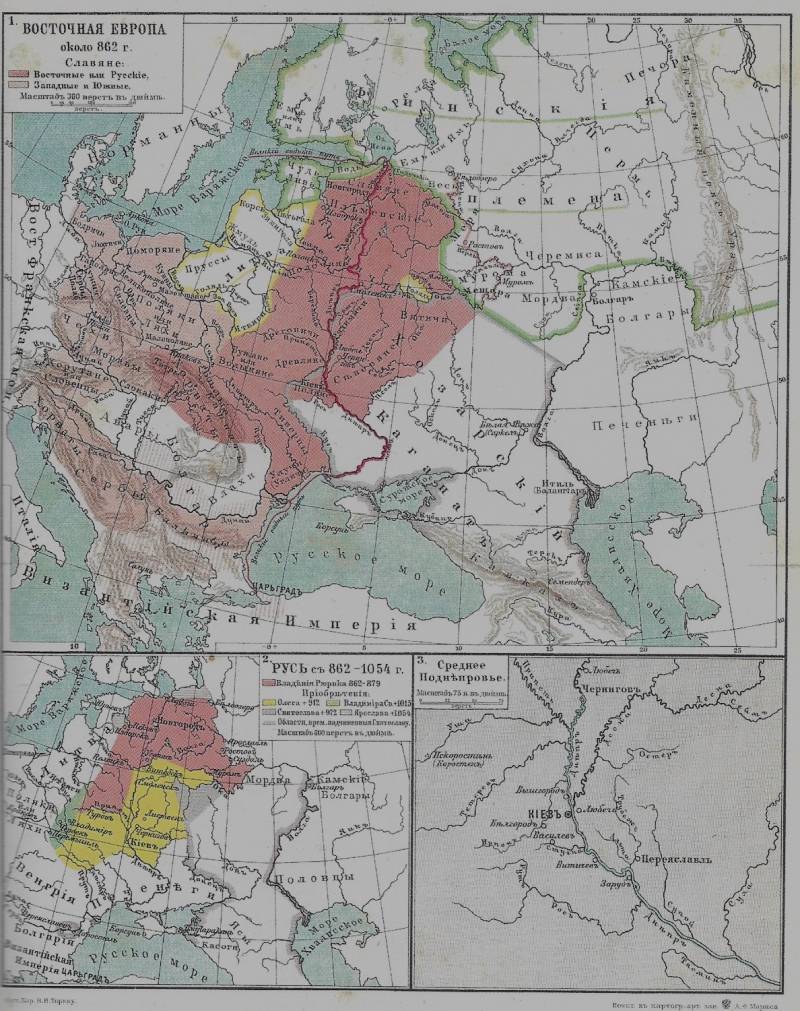
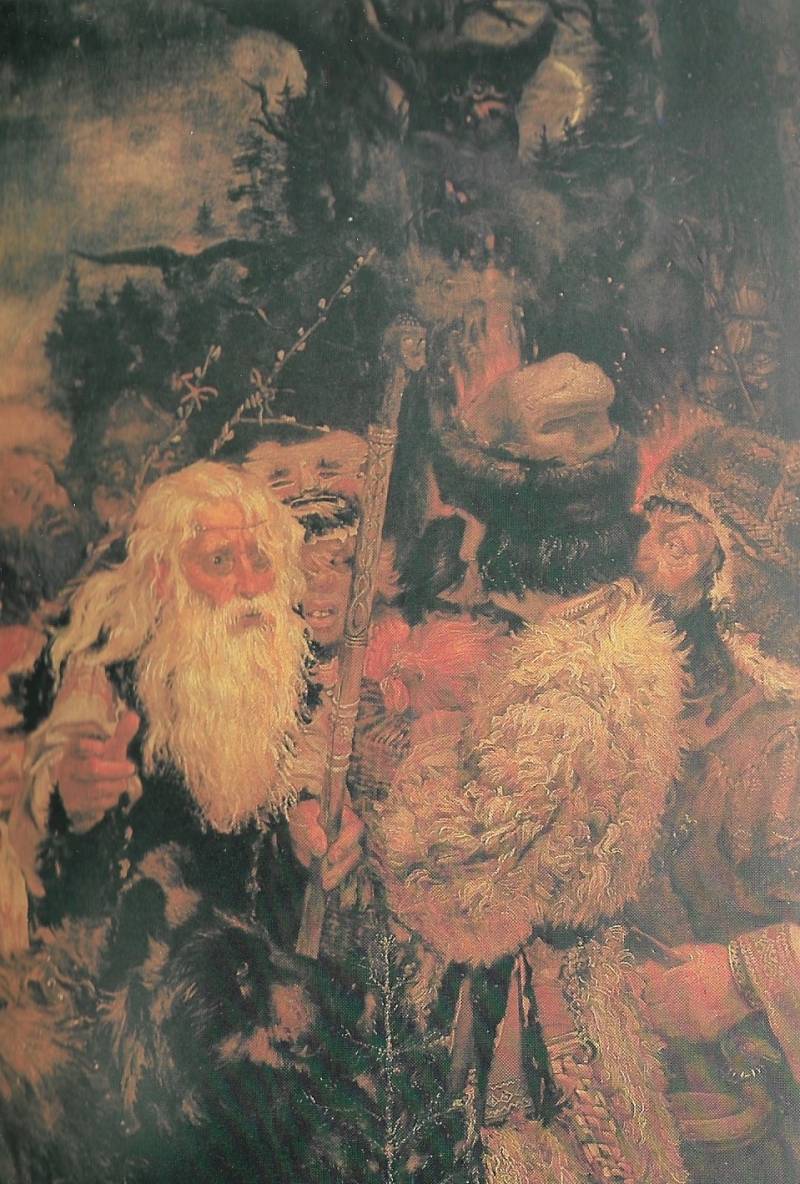
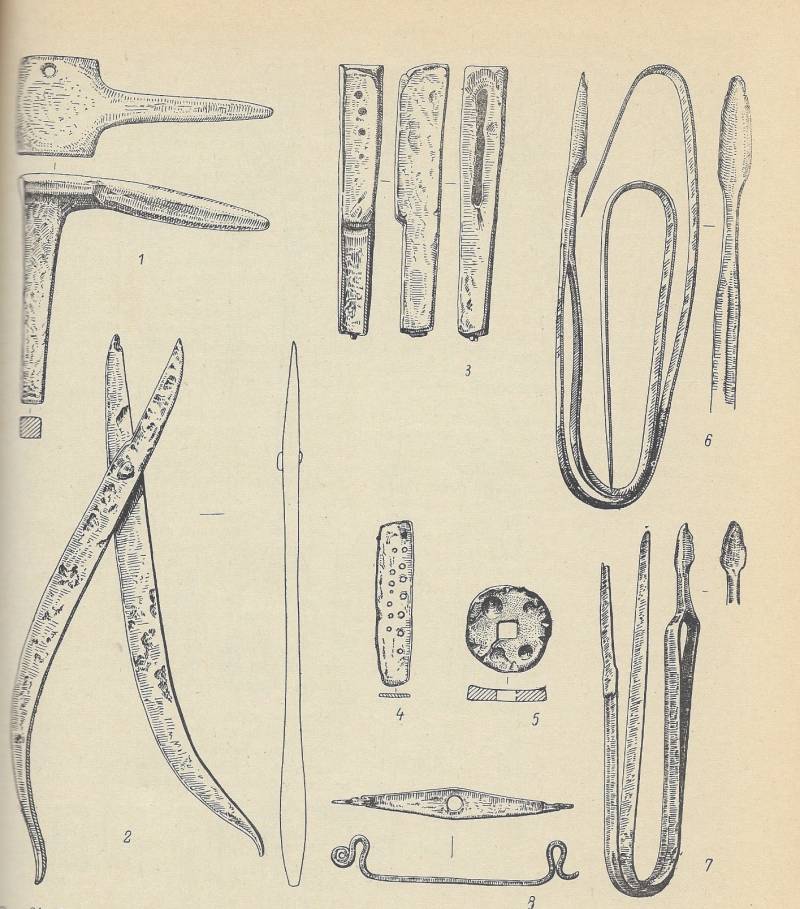
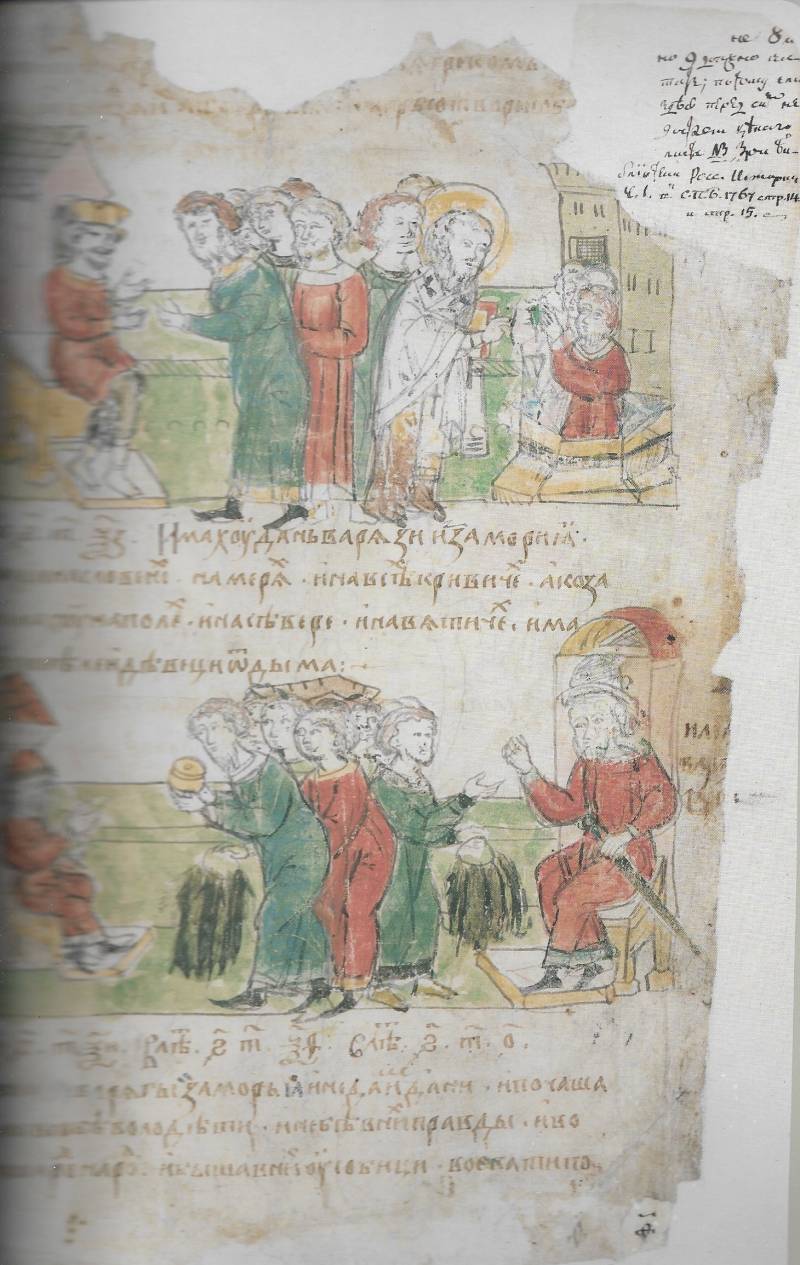
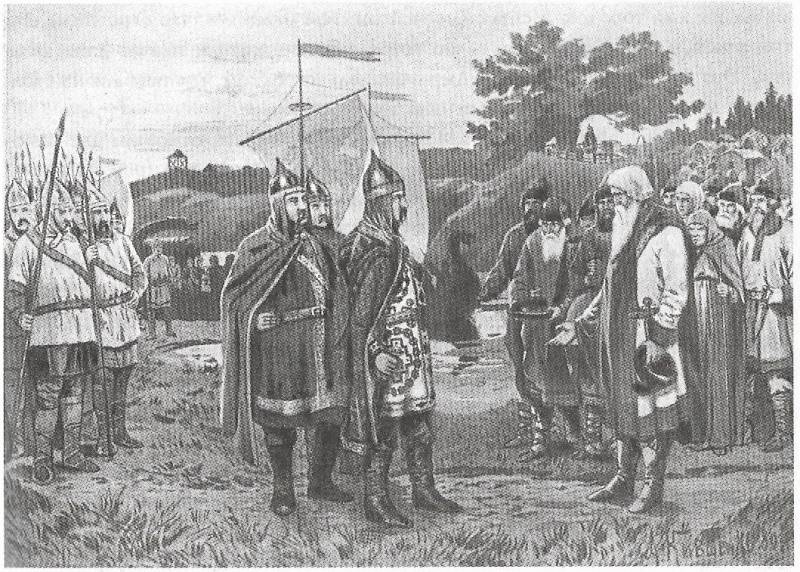
Information